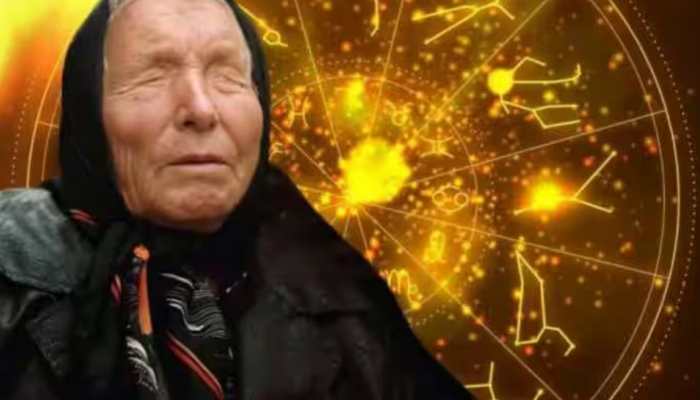Dussehra 2022: 7 facts about Dussehra you did not know
Dussehra is the day when Rama slays the demon king Ravana. Here are 7 interesting facts about Dussehra that you probably did not know about.
- Dusshera will be celebrated on 5th October 2022
- Dussehra is marked with the ceremonial Ravan Dahan
- This festival symbolizes the victory of good over evil
Trending Photos
) Source: File photo
Source: File photo Dussehra 2022: Dussehra, also known as Vijayadashami, is a Hindu festival celebrated on the tenth day of the Ashvin month. On this day, Lord Rama killed the evil king Ravana and, following a prolonged battle, Goddess Durga destroyed the monster Mahishasura. This day, which commemorates the triumph of good over evil, is celebrated in many different ways across the nation, including the all-night Ram Leela celebrations in some regions of North India, the massive processions in Kullu, Himachal Pradesh, the military parades in Mysore and the Golu in some regions of South India.
Most stories associated with Dusshera and Ravan are to do with Ravana abducting Mata Sita leading to a battle with Lord Rama and his end. However, here are some lesser-known facts about Dussehra:
Ravana is also worshipped
Although the majority of Indians regard Ravana as the very opposite of "good," there are areas of India where he is hailed and revered. For an instance, consider Mandsaur and Vidisha in Madhya Pradesh, where Ravana is considered a son-in-law. In this place, Ravana is not only revered but worshipped; he has temples built in his honour. Mandsaur reveres Ravana since it is thought that his wife Mandodari was born and raised here. He is now Mandsaur's son-in-law as a result. The inhabitants of Mandsaur worship Ravana for his devotion to Lord Shiva, intellect, and knowledge. Similarly, the Gond Tribals of Gadchiroli, Maharashtra, worship both Ravana and his son Meghanada.
Not just about Rama slaying Ravana
While Rama's victory over Ravana is commonly associated with Dussehra, the festival is celebrated differently in East and South India. Overall, the statue of Maa Durga slaying the demon Mahishasura towers in Kolkata. Mahishasura, the king of the demons, is of the name Mysuru. The purpose of Dussehra in this instance is to celebrate Goddess Chamundeshwari's triumph over Mahishasura. The Vijaynagara kings in Mysuru established the tradition of celebrating Dussehra in the fifteenth century.
Pandavas end their exile (vanvasa)
The Pandavas hid their weapons in the branches of the Shami tree while they were exiled. They returned to get their weapons after their exile was over. They revered both the tree where the weapons were hidden and the weapons themselves.
Kautsa Gurudakshina
A student named Kautsa wished to honour his teacher Rishi Varatantu by offering him Guru Dakshina once he had finished his studies. Guru Dakshina was not desired by the rishi, but Kautsa insisted. The rishi concluded by requesting 140 million gold coins from Kautsa. Kautsa went to King Raghuraja of Ayodhya who was known for his generosity. The king further asked Lord Indra instead. Lord Indra then called the deity of riches, Kubera and requested that he rain gold coins from the sky on the "Shanu" and "Aapti" trees. The king handed Kautsa the coins in this gift, who then gave them to his teacher.
The remainder was given back to Kautsa, and the teacher merely pocketed the amount he asked. The pupil attempted to return the coins to the king, but the king turned them down. Kautsa then gave the remaining coins to the people of Ayodhya on the day of Vijayadashami.
Ashoka establishes Buddhism
It is also revered as a sacred day by Buddhists. They hold that King Ashoka, who had been devastated by the magnitude of the destruction and casualties in the Kalinga war, made his conversion to Buddhism on this day. Dussehra is celebrated as Ashok Dashami in Nagpur's Deekshabhoomi.
Vidyarambham (Initiation into the world of letters)
In Kerala, Dussehra is regarded as a fortunate day to introduce kids to the alphabet. The mantra "Om Hari Shree Ganapathaye Namah" is written on a plate of rice grains to introduce learning to children between the ages of three and five.
Dussehra brings the seasonal change
Science has always been a part of Indian traditions. The yagnas carried out during Navaratri and Dussehra are said to purify the atmosphere of disease-causing germs present during the transition from monsoon to winter, when Dussehra is celebrated.
Also Read: Happy Dussehra 2022: Vijayadashami WhatsApp messages, wishes, greetings and quotes
Whichever part of India you live in, we hope and pray that Dussehra brings you joy and prosperity!
Stay informed on all the latest news, real-time breaking news updates, and follow all the important headlines in india news and world News on Zee News.
Live Tv







)
)
)
)
)
)
)
)
)
)
